Understanding shame cycles and how to break them
Breaking Free from the Repetitive Loop of Shame

Understanding the Complex Web of Shame
Shame is a universal yet deeply personal emotion that can trap individuals in destructive cycles, impacting mental health and emotional well-being. Its roots often lie in childhood experiences, societal standards, or trauma, and its effects can be far-reaching. This article explores the psychological mechanisms behind shame cycles, their impact, and effective strategies to break free from these patterns, fostering healing and resilience.
The Psychological Foundations of Shame Cycles
What are the psychological mechanisms behind shame cycles?
Shame cycles are driven by complex psychological processes centered around deep-seated negative self-perceptions. These internalized views often originate from childhood experiences such as neglect, criticism, or rejection, which shape how individuals see themselves and their worth.
Internalized devaluing beliefs about oneself and others get reinforced through memories and fantasies, creating persistent feelings of exposure, vulnerability, and tainted self-worth. When triggered by certain reminders—like failure, criticism, or societal standards—these internal representations activate strong emotional responses.
Activation of shame often prompts defensive reactions. People might respond by projecting their feelings onto others, blaming external factors to avoid personal shame, or engaging in avoidance behaviors like withdrawal or denial. These responses temporarily numb the pain but ultimately sustain the shame cycle.
Negative self-talk and rumination further deepen feelings of inadequacy. Repetitive thoughts can spiral into internal dialogues filled with self-criticism, guilt, and hopelessness, making it harder to break free from shame.
An important aspect of shame is its close connection with anger. Often, feelings of being insulted or unappreciated may trigger hostility, which can be directed inward or outward. This linkage exacerbates the cycle, as anger can reinforce feelings of unfairness and deepen shame.
Over time, these interconnected psychological processes maintain a pattern of recurrent shame, which can manifest in maladaptive behaviors such as substance abuse, overeating, or self-injury. Recognizing these mechanisms is essential for effective intervention and healing.
Below is a summary table capturing these elements:
| Psychological Component | Description | Impact on Shame Cycle |
|---|---|---|
| Internalized beliefs | Negative self-perceptions rooted in early experiences | Reinforces feelings of worthlessness and exposure |
| Triggers (memories, beliefs) | Events or thoughts reminding of shame-inducing past experiences | Activate shame responses and defensive behaviors |
| Defense responses | Projection, avoidance, denial | Maintain and amplify shame; prevent resolution |
| Negative self-talk | Self-critical thoughts and rumination | Deepen feelings of inadequacy and hopelessness |
| Shame and anger | Feelings of insult or rejection generating hostility | Escalates emotional distress and shame loops |
Understanding these psychological foundations helps in developing targeted strategies to interrupt the shame cycle, promoting emotional resilience and healthier self-perceptions.
Shame's Impact on Mental Health and Emotional Well-Being
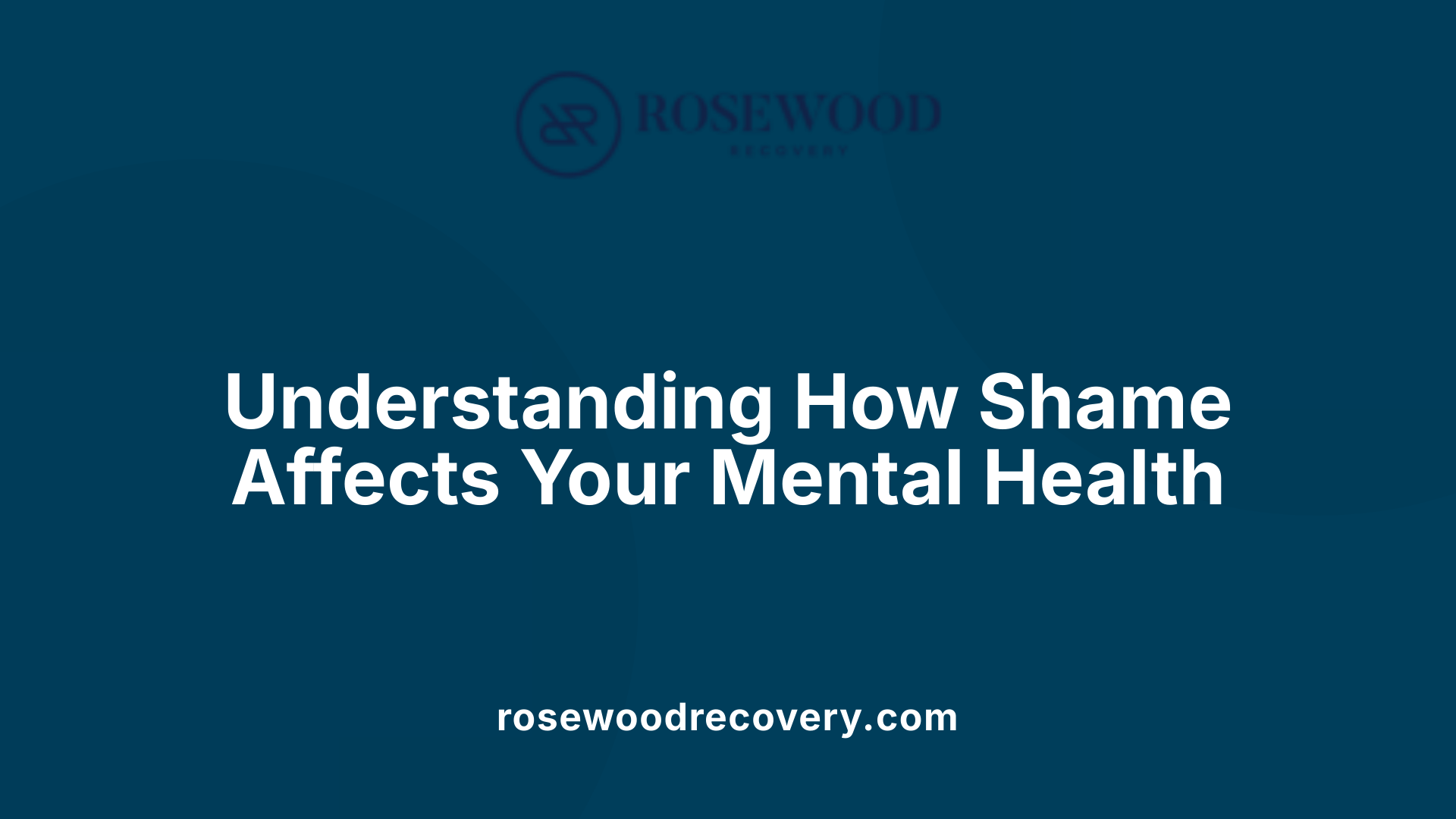
What impact does shame have on mental health and emotional well-being?
Shame can significantly harm mental health, leading to feelings of inadequacy and worthlessness. When individuals experience shame, it often erodes their self-esteem and sense of self-worth. This emotional burden can foster conditions like depression and anxiety, making it challenging to maintain a positive outlook.
In addition, persistent shame can cause social withdrawal and loneliness. People may isolate themselves to avoid judgment or further shame, which then reduces their social support and deepens emotional distress. Over time, this cycle can strain relationships and diminish trust, creating barriers to intimacy and connection.
Chronic shame and shame-related anxiety have been linked to impairments in functioning. They can increase vulnerability to mental health disorders and make seeking help seem daunting, further hindering recovery. The weight of shame often provokes defensive reactions, anger, and passive aggression, which can damage personal and professional relationships.
Nevertheless, addressing shame through therapy, mindfulness, and compassionate self-reflection plays a crucial role in healing. These approaches help rebuild self-esteem, restore trust, and foster healthier relationships. Tackling shame head-on is essential for improving overall mental wellness, allowing individuals to move beyond their inner critic and embrace a more compassionate self-view.
Identifying Triggers to Manage Shame Effectively
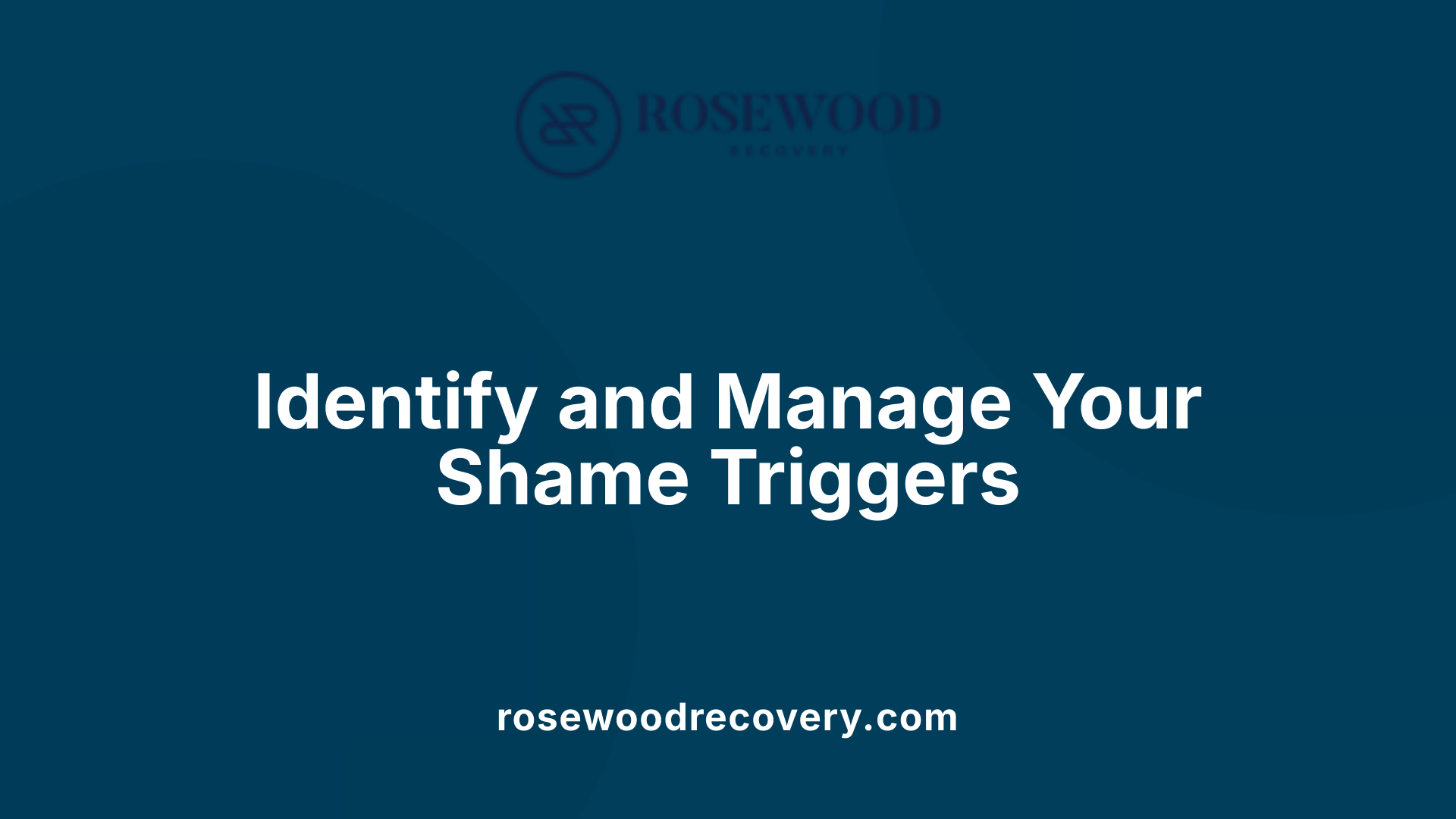 Understanding and managing shame involves recognizing the specific triggers that activate feelings of shame. These triggers can be varied, including situational factors, internal dialogues, or societal expectations.
Understanding and managing shame involves recognizing the specific triggers that activate feelings of shame. These triggers can be varied, including situational factors, internal dialogues, or societal expectations.
Situational triggers often relate to experiences of failure or perceived inadequacy. For example, making a mistake at work or in personal relationships can evoke feelings of shame, especially if one holds high personal standards or fears judgment from others.
Internal triggers involve negative self-talk and inner critical voices. When individuals judge themselves harshly or dwell on perceived flaws, these thoughts can become powerful sources of shame, reinforcing feelings of unworthiness or failure.
Societal pressures and unrealistic standards also play significant roles. Societal expectations about body image, success, and social status can create an environment where individuals feel they do not measure up, leading to shame and self-doubt.
Methods for Recognizing Personal Shame Triggers
Recognizing your own shame triggers requires mindfulness and self-awareness. This can include:
- Reflecting on recent moments when you felt overwhelmed by shame.
- Keeping a journal to note situations, thoughts, or feelings linked to shame episodes.
- Paying attention to physical signs, such as increased heart rate or tension, that may occur when shame is triggered.
Anticipating emotional reactions to these triggers allows individuals to prepare coping strategies. For example, if rejection is a trigger, practicing self-compassion and reminding oneself that rejection does not define worth can be helpful.
How can identifying triggers help in managing shame cycles?
Knowing what activates shame allows individuals to become proactive rather than reactive. When aware of triggers, one can employ methods like seeking support from trusted friends or therapists, practicing mindfulness, or reframing negative thoughts. This process is supported by the Shame Resilience Theory, which emphasizes awareness, critical recognition, and connection as tools to navigate shame.
Building this awareness also helps to break the cycle of shame, reducing its intensity over time. By addressing the roots of shame directly, individuals can foster resilience, improve self-acceptance, and promote emotional healing, creating a more positive relationship with themselves.
Anticipating Emotional Reactions
Expecting how you'll react emotionally to shame triggers can prepare you for potential distress. Recognizing signs of escalating shame, such as feelings of worthlessness or urge to withdraw, makes it easier to employ calming techniques.
Practicing mindfulness, deep breathing, or grounding exercises during moments of emotional upheaval can help maintain perspective and prevent shame from spiraling out of control.
Overall, identifying and understanding personal triggers is a fundamental step toward breaking free from shame cycles. It encourages a compassionate approach to oneself and enhances resilience, supporting healthier emotional patterns and well-being.
Strategies for Breaking the Shame Cycle
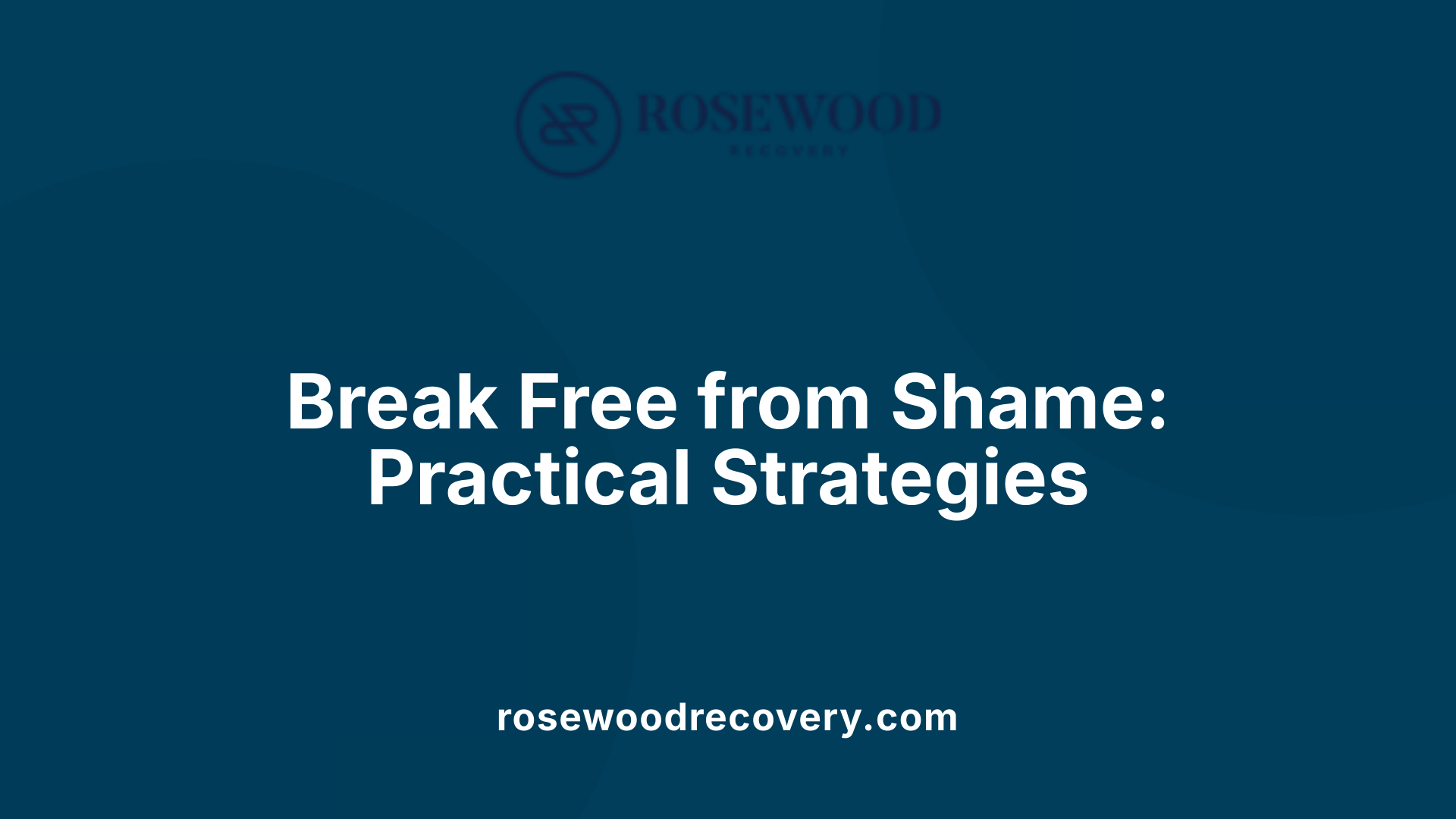
What strategies are effective in breaking shame cycles?
Breaking free from the cycle of shame involves a combination of mindful self-awareness, compassionate practices, and supportive actions.
One of the most effective approaches is practicing self-compassion and mindfulness. By observing feelings of shame without judgment, individuals can reduce their intensity and gain clarity. Techniques such as mindful breathing, meditation, and journaling foster a gentle awareness of emotions, allowing people to accept shame rather than be overwhelmed by it.
Cognitive restructuring and reframing negative beliefs play a crucial role too. Challenging harmful self-talk—like labeling oneself as unworthy—helps create more realistic and compassionate perspectives. Recognizing that feelings of shame do not define core identity or worth can diminish their power over emotional well-being.
Sharing these feelings with trusted friends, family, or support groups offers validation and diminishes the sense of isolation. Such support networks help individuals realize they are not alone in their struggles and facilitate healing through empathy and understanding.
Engaging in acts of service or vulnerable self-expression can be transformative. Writing compassionate letters to oneself, practicing honest communication, or contributing to others in need redirects focus outward and builds resilience. These activities reinforce a sense of purpose and connection.
Another key strategy involves exploring and addressing the root causes and triggers of shame. Identifying situations or beliefs—such as societal standards or past trauma—that provoke shame allows individuals to confront and process these issues more effectively.
Finally, establishing healthy boundaries with shame-provoking individuals or environments helps protect emotional health. Limiting exposure to harmful relationships or narratives prevents shame from perpetuating.
By combining these approaches—mindfulness, cognitive reframing, support, vulnerability, and boundary-setting—individuals can disrupt shame's grip and foster long-lasting self-acceptance.
Intergenerational Shame and Its Effects on Behavior
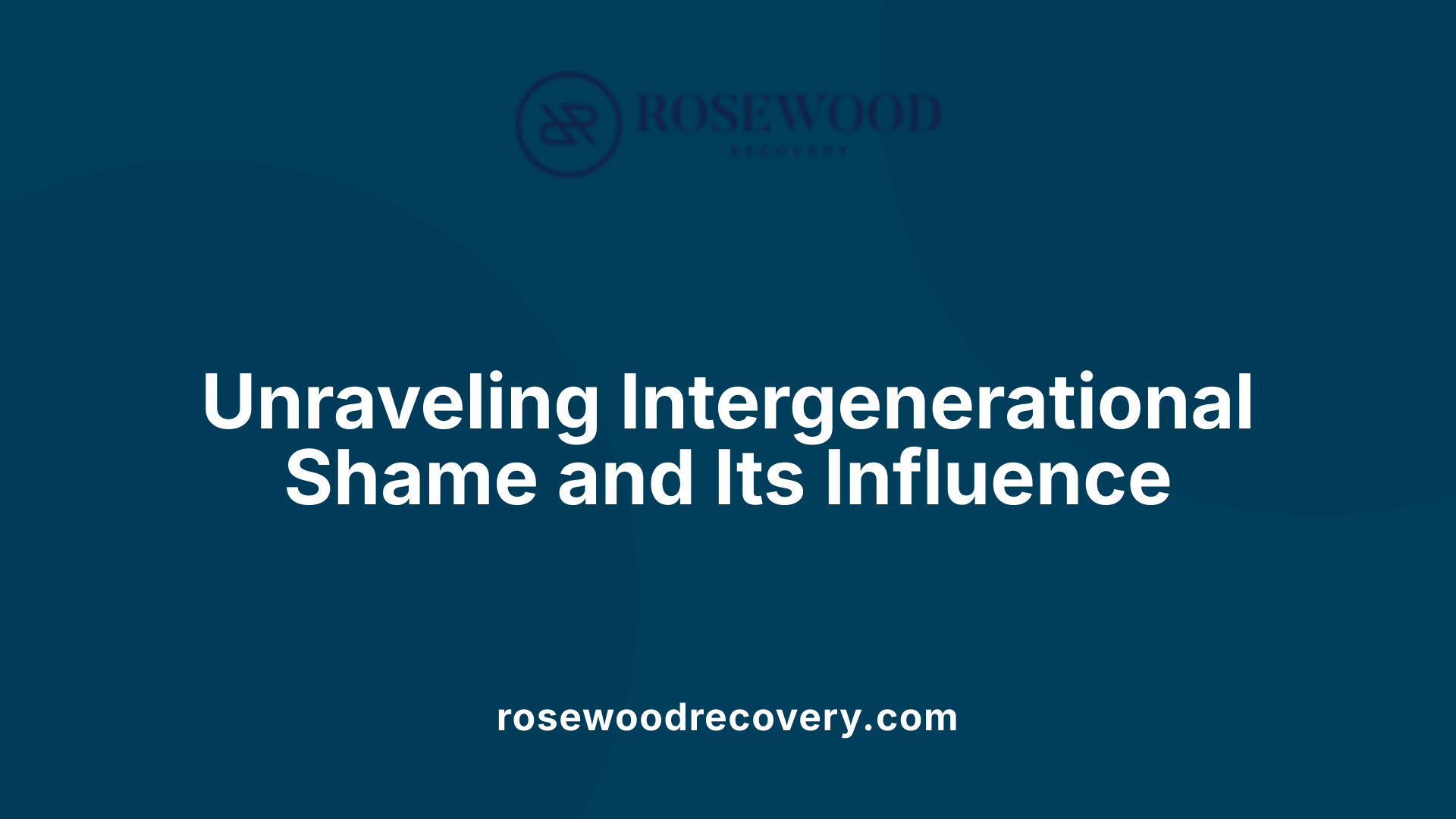
How does intergenerational shame influence behavior and emotional health?
Intergenerational shame is a powerful force that shapes behaviors and emotional well-being across family lines. It involves the transmission of negative beliefs, feelings, and coping mechanisms from ancestors to descendants. This transmission often occurs through repeated familial patterns, such as punitive parenting or unspoken expectations, which embed feelings of worthlessness, guilt, and inadequacy.
Such shame can manifest in various ways, leading individuals to develop perfectionism, self-criticism, and emotional dysregulation. These patterns significantly increase the risk of mental health issues, including anxiety, depression, and difficulty managing emotions. Family communication styles that involve secrecy or silence further entrench shame, as open dialogue is replaced by silence, making shame feel more overwhelming.
Cultural narratives also play a role, especially when societal standards portray certain behaviors or appearances as acceptable or unacceptable. These narratives reinforce shame related to body image, success, and relationships, making it an ingrained part of identity.
Biological factors like epigenetic changes add another layer; trauma and shame experienced by previous generations can cause genetic modifications that influence stress responses, making descendants more susceptible to emotional difficulties.
Addressing intergenerational shame requires increased awareness and therapeutic intervention. Creating supportive environments where individuals can understand, express, and challenge inherited beliefs is crucial. Therapy can help dismantle negative thought patterns rooted in shame, promoting resilience and emotional healing.
By breaking the cycle through honest dialogue, cultural awareness, and psychological support, individuals can reclaim their sense of worth and foster healthier family dynamics.
Harnessing Emotional Regulation to Mitigate Shame's Effect
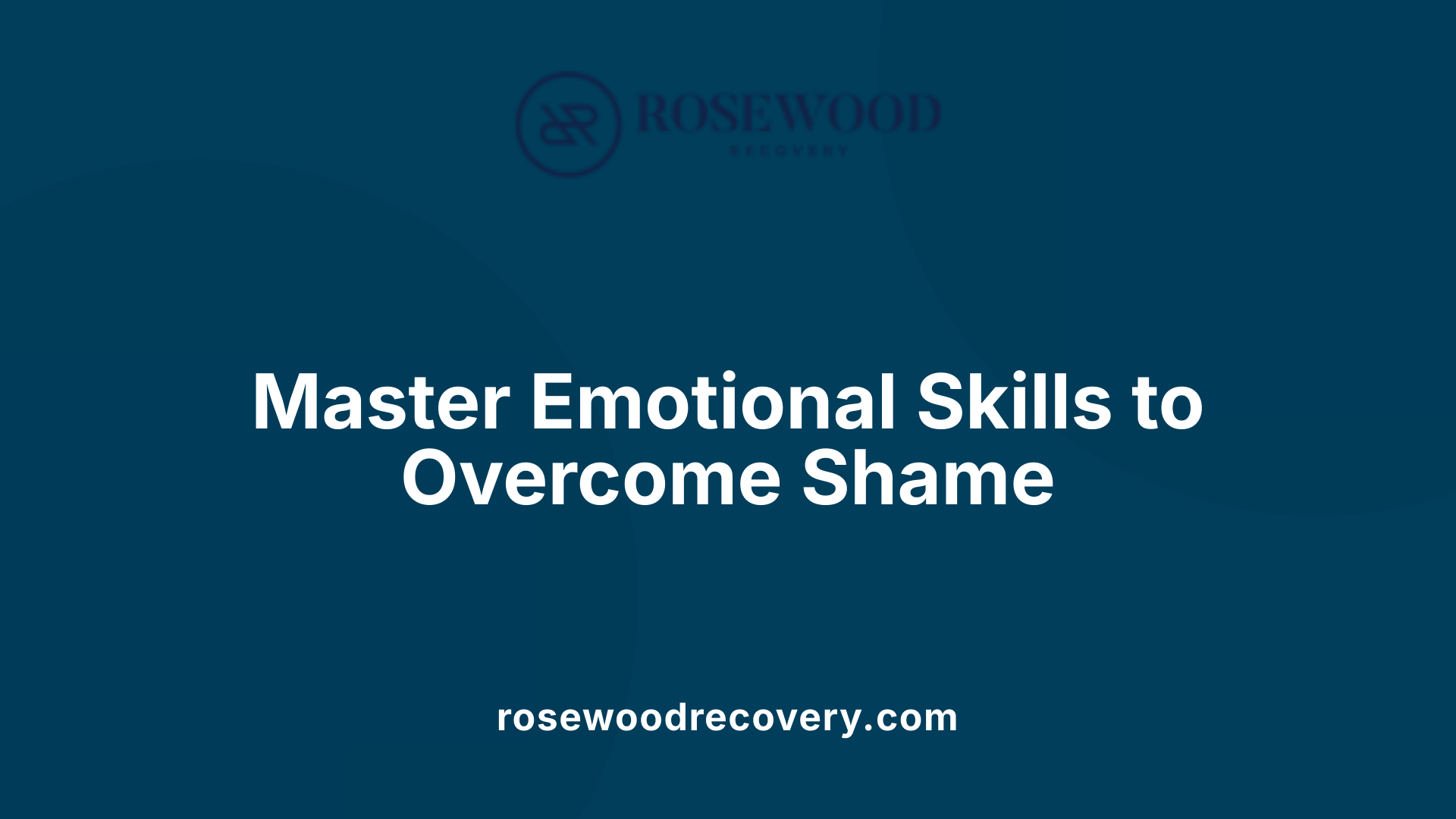
How can emotional regulation skills help in managing shame and related emotions?
Emotional regulation skills are vital tools in managing the powerful feelings of shame that often undermine mental health. Techniques such as cognitive reappraisal, self-validation, and opposite action assist individuals in reducing emotional intensity and gaining a more balanced understanding of their feelings.
Cognitive reappraisal involves reinterpreting the situation that triggered shame, shifting from negative self-talk to more compassionate perspectives. For example, viewing a failure as a growth opportunity rather than a personal flaw can diminish feelings of worthlessness.
Self-validation reinforces personal worth, encouraging individuals to acknowledge their feelings without judgment. This practice fosters self-acceptance and builds resilience against shame's tendency to spiral into self-criticism.
Opposite action entails doing the opposite of the instinctive shame-driven behavior, such as approaching others instead of withdrawing when feeling unworthy. This approach can break the cycle of avoidance and shame rumination.
Using these skills collectively helps prevent shame from escalating into harmful behaviors like social withdrawal or self-punishment. They promote healthier emotional responses, making it easier to confront and process shame.
Talking about shame with supportive and non-judgmental people not only de-stigmatizes these feelings but also affirms one’s worth. Validating self-talk further reduces shame’s impact by reinforcing a positive self-image.
In moments of intense shame, mindfulness exercises such as deep breathing and grounding techniques help in calming the nervous system, allowing an individual to approach their feelings with clarity and compassion.
Incorporating tools like journaling to explore shame triggers and practicing mindful breathing creates a safe space for emotional release and reflection. These practices decrease the likelihood of rumination and help develop a more adaptive way to deal with shame.
By strengthening emotional regulation, individuals can better process shame, reduce impulsivity linked to shame-driven behaviors, and foster a sense of mastery over their emotional responses.
Strategies to manage intense feelings of shame
| Strategy | Description | Benefit |
|---|---|---|
| Cognitive reappraisal | Reinterpreting shame-inducing events positively | Reduces emotional intensity and promotes understanding |
| Validation techniques | Affirming feelings without judgment | Enhances self-acceptance and reduces shame’s grip |
| Opposite action | Engaging in behaviors opposite to shame responses | Interrupts shame spirals and encourages social connection |
| Mindfulness practices | Deep breathing, meditation, grounding techniques | Calms the nervous system, fosters awareness and compassion |
| Talking supportively | Sharing feelings with trusted others | Diminishes shame’s power and builds emotional resilience |
By integrating these tools into daily routines, individuals can effectively diminish the impact of shame, leading to improved mental well-being and healthier emotional regulation.
Moving Toward Healing and Resilience
Understanding the intricate mechanisms of shame and recognizing its pervasive impact on mental health is the first step toward healing. By identifying triggers, practicing mindful self-awareness, and fostering compassion, individuals can interrupt shame cycles and rebuild their sense of worth. Therapeutic interventions, supportive relationships, and healthy parenting practices play vital roles in fostering resilience and breaking the cycle of intergenerational shame. Embracing emotional regulation and self-compassion strategies empowers individuals to navigate shame with greater ease and confidence. Ultimately, healing from shame-related trauma enables a more authentic, connected, and emotionally fulfilling life, emphasizing that recovery is not only possible but within reach with commitment and support.
References
- Breaking the Cycle of Shame and Self-Destructive Behavior
- Top Strategies to Break the Cycle of Shame | YLP
- How to Heal From Guilt and Shame in Recovery
- Understanding Trauma and the Shame Spiral
- How Shame Impacts Mental Health: 6 Tips For Breaking ...
- Self-hatred feeds on inner shame. Here's how to break the ...
- Shame-Related States of Mind in Psychotherapy - PMC
More Articles
Recovery Begins Here
Click below to get in touch and schedule a consult call with our team to begin your journey towards happiness and freedom.
Rosewood Recovery does not discrimate against any person because of the race, color, religious creed, ancestry, age, sex, sexual orientation, gender identity, national origin, handicap or disability or the use of a guide or support animal because of the blindness, deafness or physical handicap.





